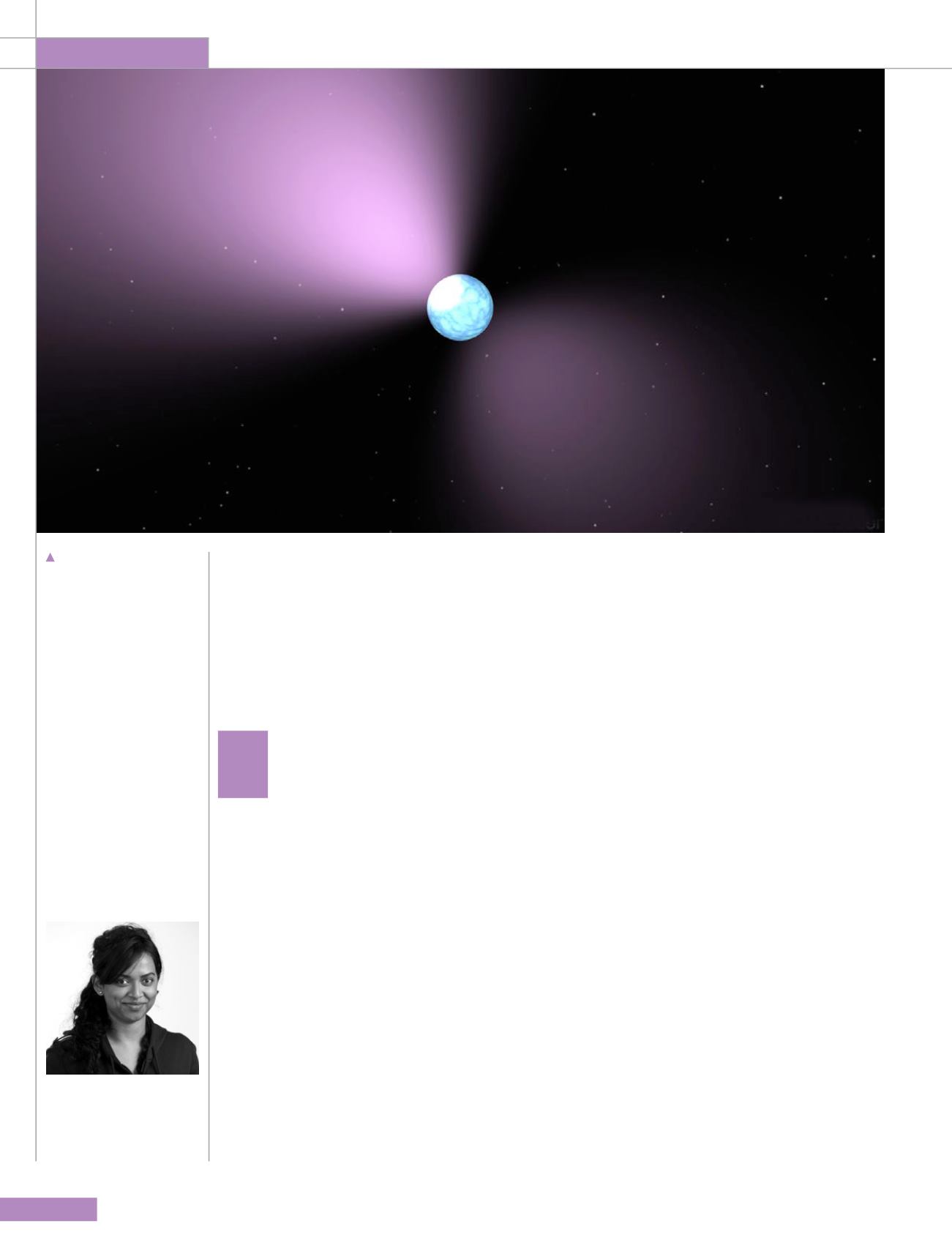
ROOM
80
Space Science
Manisha Caleb
PhD Student, Mount
Stromlo Observatory,
Australia
I
n astronomy, there’s nothing more
tantalising than an unexplained signal.
Throughout astronomical history
whenever something has gone bump in
the night, it has hinted towards a new
phenomenon, be it pulsars or gamma-ray bursts.
One such ‘bump’ came to light in 2007, when
astronomer Duncan Lorimer and his team from
West Virginia University, USA, announced the
discovery of a never seen before, extremely bright,
coherent, millisecond duration radio pulse. This
pulse was found in archival data of the Small
Magellanic Clouds taken in 2001 with the Parkes
radio telescope in New South Wales, Australia.
The pulse, dubbed the ‘Lorimer burst’, exhibited a
‘dispersion’ sweep characteristic of all pulsars.
Pulsars are ultra dense, rotating neutron star
remnants of a supernova explosion in our Galaxy,
which emit jets of radiation along their poles. As
the pulsar spins, these jets of radiation cross our
line-of-sight emitting a ‘blip’ similar to the workings
of a lighthouse. As the radio signal travels from
the source to the observer on Earth, the higher
frequencies arrive at the telescope a fraction of a
second earlier than the lower frequencies.
This is representative of the total number of
electrons the signal has traversed in the diffuse
plasma that fills interstellar and intergalactic
space, called the dispersion measure. This
smearing of the radio signal due to electrons in
the cosmic medium is analogous to white light
being dispersed by a prism into the colours of the
rainbow. Naively, the dispersion measure can be
thought of as a proxy for distance such that the
larger the dispersion measure, the more electrons
the signal has interacted with and the further away
the source producing the FRB appears to be.
The electron density in our Galaxy has been well
modeled using pulsars. The dispersion measure of
the Lorimer burst was found to be eight times the
expected Galactic contribution for the given line-
of-sight from the model, placing it well outside the
local Group of galaxies.
Also, unlike pulsars, the Lorimer burst was not
seen to repeat despite hours spent re-observing the
same patch of sky. There were found to be no known
Artist’s concept of
pulsar, which is like a
lighthouse as its light
appears in regular pulses
as it rotates. Pulsars are
dense remnants of
exploded stars and are
part of a class of objects
called neutron stars.
For nearly a decade, astronomers have been puzzling over the origin of a
signal that is very bright but lasts only for a millisecond. Dubbed the ‘Lorimer
burst’ this type of fast radio burst (FRB) has been linked to everything from
signs pointing to an extra-terrestrial civilisation to the collision of two of the
densest objects in the Universe. Now, with an upgrade to the largest radio
telescope in the Southern hemisphere, scientists working on a project known
as UTMOST are hoping to solve the mystery once and for all.
Telescope targets
enigmatic deep space
mystery
NASA/JPL/Caltech


